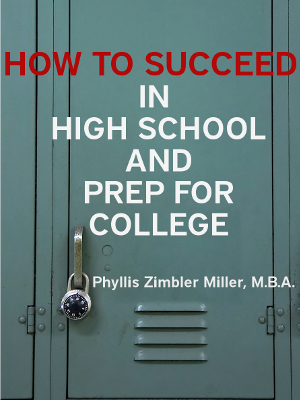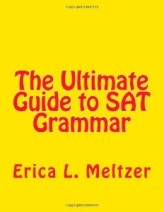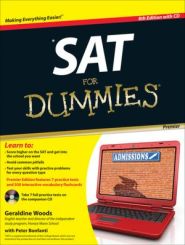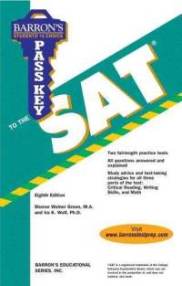Probably.
For the sake of simplicity, let’s say that there are two factors that affect one’s pacing on the SAT, which we’ll call “brain speed” and “habit speed.”
Brain speed is somewhat analogous to processor speed in a computer. It cannot be easily changed; some people’s brains move from thought to thought faster than others’. I don’t know if there’s any correlation between brain speed and intelligence. Over many years teaching students, I have observed some very smart people with slow brain speed (even a couple of geniuses), and some who aren’t as smart, but who process quickly.
If you’re a brainiac who processes slowly, there’s no reason you can’t be successful in a variety of fields. However, standardized tests such as the SAT can be something of a stumbling block. Arguably, students are given less time to solve questions on the SAT than they will be on college exams. In an earlier article, I proposed that the SAT would be fairer if it were administered over two days.
However, only a small minority of students have a brain speed so slow that it prevents them from answering most of the questions on the SAT. That is, most students who leave more than a handful of blanks do so largely out of “habit speed,” and will be able to speed up.

Before I get into specific methods of speeding up, I want to mention one relevant issue that only affects part of the test: reading speed. If you’re a slow reader, you will have trouble with sections that include passages. Of course, it is possible to improve reading speed. You might take a speed reading course (live or online). But if you have a learning disability that affects reading speed (and don’t qualify for special accommodations), or if English in not your primary language, you may still have a problem. Note that there are ways to approach the Reading questions without reading the entire passage. Unfortunately, they are beyond the scope of this article.
The advice I want to offer here is straightforward, but the process of improving your pace can be frustrating. The SAT is already quite challenging, and devoting some of your focus and energy to pacing may throw you off. Your scores may even drop temporarily, but you shouldn’t let that bother you.
Remember that, whatever your overall pace, you should begin slowly on each question. Review what I said about pacing like a golf swing in this article.
Using New Techniques to Speed Up
Whether you are studying from books, websites, or live teachers, you will learn new techniques to solve SAT questions, such as plugging in and anticipation. These techniques are designed to help you answer more questions correctly; they almost always help you solve faster as well. My students often question this. “They ask, if I take all that time anticipating, won’t I have trouble finishing the sections?” At first, you may slow down as you struggle with new methods. But eventually, that extra bit of time you spend at the beginning of a question will you help you to solve more efficiently – i.e. faster.
When you first learn new methods, it is more important to concentrate on using them properly than on scoring high and/or finishing quickly. Have patience, and your results will improve over time.

Improving “Habit Speed”
I’ve had many students who believed they were slow thinkers, but actually weren’t. How can you tell? After many years of teaching, I can usually estimate a student’s potential “thinking speed” after a lesson or two; perhaps you know a teacher who can do the same. Also, based on completely unscientific observation, I’ve noticed a strong (and perhaps surprising) correlation between hand speed and brain speed. It’s not foolproof, but if you have quick hands, you may be a potentially fast thinker.
I use the term “habit speed” since I’ve found that many students solve slowly because they have become comfortable doing so. After all, time-pressure is not such a great factor on most tests, so there’s no incentive to practice performing at top speed.
Since speeding up will entail leaving your “comfort zone,” it is only natural that your accuracy will suffer somewhat, until you become comfortable and familiar with your new pace.
I did not invent the technique I am about to describe. In fact, it’s simple enough that I’m sure many people have thought of it on their own. To give due credit, I actually got the idea from a Karate expert named Dan Anderson. His instructor had told him never to perform a martial arts technique faster than he could with perfect form. However, when Anderson became a teacher, he found that such a rigid approach retarded his students’ development. Instead, he encouraged them to perform their techniques a little faster than they could perfectly. They became fast fighters quickly, and won a lot of tournaments.
You can apply this idea to solving SAT questions. Don’t go crazy and try to increase your speed by 50 per cent in one sitting. Aim for an increase of 10 – 15 per cent. If your score stays the same, that’s good. If it drops, you can try it again on another test. Once you are doing well, you can then try increasing your speed again. At some point, you may decide that you’ve gone too far, and need to back off a bit.
This method is not Nobel Prize-winning material, but it should be simple to implement. Just remember these two precepts: a little at a time, and be patient with your scores.
As you can imagine, this technique is a lot more helpful to some students than others. If you find that your speed doesn’t improve by that much, remember that you can still get a very nice score even if you leave out 5 questions on each section. And if you do speed up a lot, be careful not to overdo it. It’s not worth making careless errors by trying to save time for the longer, harder questions that are found at the end of most SAT sections.










